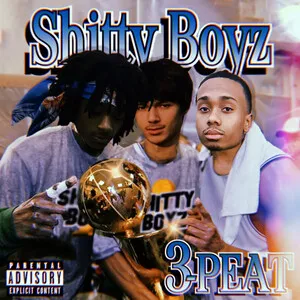Scam rap is a late-2010s branch of hip hop that centers lyrically on internet fraud, credit card swiping, identity theft, and the broader hustle culture surrounding online schemes.
Musically, it favors sparse, often loop-based trap beats with punchy drums, sub-bass, and minimal melodic material. Rappers commonly use a deadpan or conversational delivery, punch-in recording, and off-kilter bar placement that rides just ahead of or behind the beat. The tone is equal parts instructional, braggadocious, and comedic, with jargon-rich storytelling that reads like play-by-play tutorials of illicit schemes.
The style is most closely associated with the Detroit/Flint scene, where its punch-in flow, dry humor, and hyper-specific detail became stylistic signatures.
Scam rap coalesced in the late 2010s in the United States, especially around Detroit and nearby Michigan cities. While hip hop had long included tales of hustling, a new wave of artists began focusing specifically on the mechanics of digital fraud—credit card scams, identity theft, and marketplace exploits—delivered with hyper-specific jargon and a dry, instructional tone. Teejayx6’s breakout in 2019 crystallized the label “scam rap,” framing the subgenre as both narrative reportage and playfully transgressive coaching.
Detroit and Flint’s regional rap sound—minimal loops, sub-heavy bounce, and punch-in flows with bars landing slightly off the grid—provided scam rap’s sonic canvas. The style emphasized clarity of narration over melodic hooks, prioritizing witty one-liners, step-by-step scheme descriptions, and sardonic asides. Crews and collaborators (e.g., BabyTron and peers) helped codify the cadence, timing, and comedic timing characteristic of the form.
Scam rap spread rapidly through online platforms where short clips, memeable lines, and tutorial-like verses traveled easily. The internet-first distribution mirrored its subject matter and rewarded artists who leaned into humor, specificity, and shareable punchlines. This visibility also fed debates around ethics and platform moderation.
Because its lyrics often describe illegal activity in granular detail, scam rap has sparked frequent criticism and moral panic. Supporters argue the songs are stylized fiction or social commentary; detractors see glamorization of crime. This tension became part of the subgenre’s identity, reinforcing its outlaw aura while keeping it under media scrutiny.
By the early 2020s, scam rap had left a mark on the broader Midwest rap scene, normalizing punch-in delivery, hyper-detailed storytelling, and a blend of dry humor with technical, jargon-heavy bars. Even outside of strictly “scam” topics, its cadences and comedic precision influenced how newer artists structure verses and ride minimal beats.








